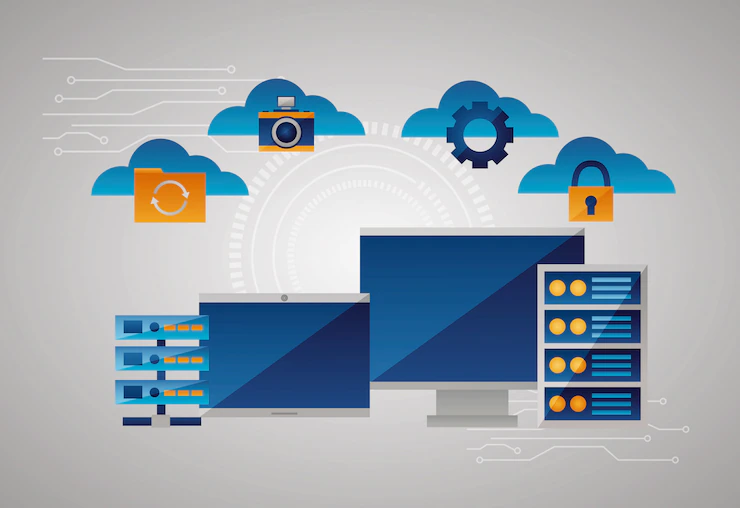In the ever-changing world of Software as a Service (SaaS) and cloud computing, understanding how to best report on your data is essential for any business. From tracking customer trends to analyzing market performance and beyond, the right SaaS reporting tool can be a huge asset in helping you stay ahead of the curve. In this article, we’ll look at what SaaS reporting is, why it’s important, and what are the best SaaS reporting tools available to help you make the most of it.
What is SaaS Reporting?
SaaS reporting is the process of gathering data from a software as a service (SaaS) application and creating reports based on that data. The data can be gathered from multiple sources, including user activity, system performance, and third-party data sources.
There are many different types of SaaS reporting tools available, each with its own unique features and capabilities. When choosing a SaaS reporting tool, it’s important to consider your specific needs and requirements. Some things to keep in mind include the type of data you need to collect, the frequency of reports, and the level of detail required.
The best SaaS reporting tools will offer a variety of features and options to meet your specific needs. They should also be easy to use and understand, with clear report formats that make it easy to find the information you’re looking for.
Why Use SaaS Reporting Tools?
SaaS reporting tools offer a number of advantages over traditional on-premise reporting solutions. They are typically much easier to set up and use, and they can be accessed from anywhere with an internet connection. SaaS reporting tools also tend to be more affordable than on-premise solutions.
One of the biggest advantages of using a SaaS reporting tool is that it can help you save time. With traditional on-premise reporting solutions, you typically have to download and install software, which can take hours or even days. With a SaaS solution, all you need to do is sign up for an account and you’re ready to go.
Another advantage of using a SaaS reporting tool is that it can help you improve your business intelligence (BI). BI is all about making better decisions by having access to the right data. With a SaaS solution, you can easily connect to data sources such as CRMs, ERPs, and web analytics platforms. This gives you the ability to generate reports that are tailored to your specific needs.
If you’re looking for a robust yet easy-to-use SaaS reporting solution, we recommend checking out Databox. Databox offers pre-built report templates for popular data sources such as Google Analytics, Salesforce, and HubSpot. You can also create custom reports using SQL queries.
How to Find the Best Saas Reporting Tools?
If you’re like most people, you probably don’t know what SaaS reporting is. And that’s okay! SaaS reporting is a relatively new term that refers to the process of tracking, analyzing, and visualizing data from software-as-a-service (SaaS) products.
There are a number of different SaaS reporting tools on the market, so how do you know which one is right for you? Here are a few things to consider when choosing a SaaS reporting tool:
1. Ease of use: The last thing you want is a tool that’s difficult to use. Look for a tool that’s user-friendly and easy to navigate.
2. Feature set: Make sure the tool you choose has all the features you need. Some tools offer more robust features than others, so decide what’s most important to you before making your decision.
3. Pricing: Don’t overspend on a SaaS reporting tool. There are plenty of affordable options on the market.
4. Customer support: If you run into any problems using the tool, you’ll want to be able to reach customer support easily. Look for a company that offers 24/7 support.
5. Integration: If you’re already using other software products, make sure the SaaS reporting tool you choose can integrate with them seamlessly. This will make your life much easier in the long run!
Top 6 List of Saas Reporting Tools
There are a number of great SaaS reporting tools on the market that can help businesses track their performance and make data-driven decisions. Here are our top 6 picks:
Klipfolio:
Klipfolio is a cloud-based data visualization and dashboard tool that helps businesses track key metrics and KPIs. It offers pre-built templates for popular business applications, making it easy to get started.
DotNetReport:
DotNetReport is an ad hoc reporting software that allows users to create, schedule, and email reports from various data sources. This reporting software is very useful for businesses and organizations that need to generate reports on a regular basis. DotNetReport makes it easy to create reports and email them to the appropriate recipients.
Geckoboard:
Geckoboard is another popular cloud-based dashboard tool that helps businesses track their performance in real time. It offers a range of customizable widgets and integrations with popular business applications.
Databox:
Databox is a data visualization and reporting platform that gives businesses access to live data from multiple sources. It also offers a range of features for customizing dashboards and reports.
Tableau:
Tableau is a powerful data visualization tool that can be used to create sophisticated dashboards and reports. It offers a wide range of features and is widely used by businesses of all sizes.
Google Data Studio:
Google Data Studio is a free reporting tool from Google that allows businesses to connect to multiple data sources and create beautiful reports and dashboards.
Conclusion
SaaS reporting is an increasingly popular way to track and present metrics, analytics, and other important information. With the right tools, you can make better-informed decisions about your business objectives. We hope this article has helped you understand what SaaS reporting is and some of the best SaaS reporting tools available today. Now that you know what to look for in a good tool, it’s time to start shopping around for one that fits your needs!



